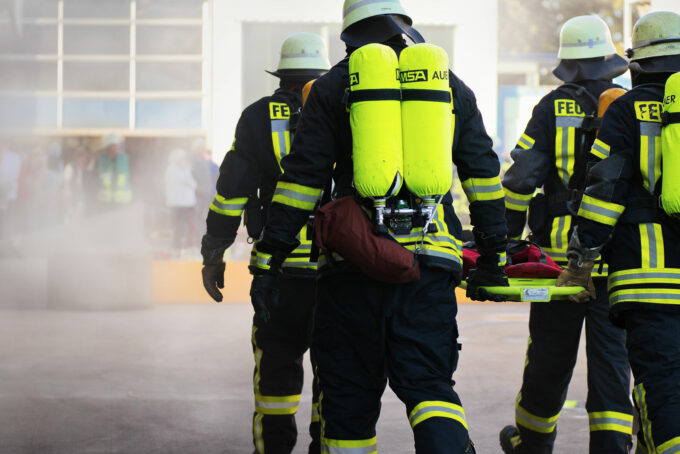
Digital Education Monitor – Universities: Digitalisation Yes, Open Education No
The recently published Digital Education Monitor (Monitor Digitale Bildung) examines the current situation as regards the digitalisation of teaching at German universities. It finds that part-digitalised courses are now standard; students have not turned out, as hoped by some, to be the driving force behind digital transformation; and the full potential of digitalisation is nowhere near exhausted. Open education, therefore, needs to be regarded more as a long-term goal.
Digital Education Monitor – Universities in the Digital Age (Monitor Digitale Bildung – Die Hochschulen im digitalen Zeitalter, Link in German), published by the Bertelsmann Foundation and the CHE Centre for Higher Education in March 2017, reports on the current state of digitalisation of higher education in Germany. 2,759 students, 662 teachers and 84 higher-education managers and administrators at German universities took part in the online survey. In addition, 10 experts from national institutions and authorities were interviewed with the help of guidelines.
Good equipment, unused potential
The technical equipment at German universities is mostly rated as good by respondents. Technical equipment therefore does not seem to be limiting the digitalisation of teaching. The existing potential, however, is not being exhausted. According to the survey, although universities have already created suitable material conditions for digital teaching, they leave it up to the individual university members to actively bring the concept to life. Little wonder, then, that the digitalisation of teaching is not as yet contributing to tackling challenges such as the growing number of students, the internationalisation of universities, personalised learning and individual promotion or the inclusion of non-traditional student target groups in the way that it could if it did not primarily depend on the commitment of individual pioneers.
According to the survey, courses partly-digitalised with media such as video tutorials, presentation tools and learning management platforms can be considered standard. Opportunities for further didactic changes, such as the inverted classroom concept, remain unused, despite around half of the students being keen on the idea of inverted classroom formats. In contrast, only 14 percent of the teachers would welcome the use of mainly videos for teaching-event preparation. Other innovative learning formats, such as social and collaborative learning (e.g. using blogs, wikis, social media), simulations and business games as well as electronic tests, are not as yet in widespread use, with long-established applications and technologies dominating the landscape. These include presentation tools such as PowerPoint and other Office programs, as well as digital documents and texts.
Still miles away from open education
Although open educational resources (OERs) are welcomed in principle by teachers, as they enrich courses and can facilitate course preparation, they are not widely used. This is partly due to existing uncertainty about their quality and copyright issues if they are shared. Another impediment named by teachers is that they would not have enough time to find suitable open educational resources given the complexity. Nearly 40 percent of teachers surveyed even had doubts concerning the existence of suitable OERs for their subject areas.
When teachers share such materials with colleagues, this is preferably not done “openly” but via e-mail, as printed material or on a USB stick, or to students within a learning management system. Teachers are also concerned with OERs that their own materials could be edited or altered. In the survey, only two cases were mentioned where university teachers had placed content on YouTube (Link in German). In view of all this, open education still seems to be more of a long-term goal at German universities. Thus, it cannot as yet make the hoped-for contribution in terms of opening up universities to new target groups and increasing social participation.
MOOCs not established in teaching
MOOCs (link in german) are among the most discussed formats. Although they are used by teachers for their own training or for course preparation, they are hardly used during the teaching itself. Only in academic training courses (link in German) do MOOCs play a somewhat larger role.
Students are not digital enthusiasts
Although many students use digital and social media privately for learning, and would like to see a mix of methods at universities, it cannot be expected of them that they become the drivers of digitalisation at universities – as university managements and administrations often hope. They make use of the digital opportunities made available to them by the teachers, but do not drive forward development themselves, even if they are open to digital media and its innovative use in teaching. In addition, the study also shows that students do not generally prefer digital media and formats, and the subject focus of the teaching staff is much more important to them. They also continue to appreciate traditional blackboard-based lectures.

For private study, 41 percent of the students use forums and blogs, 29 percent use social networks, and 42 percent use chat services. In higher education, however, these have hardly been institutionalised for student or teacher exchange. Chat services are still most popular when it comes to the latter (17 percent). For home study, Wiki/Wikipedia remains the “classic” choice, with more than two thirds (70 percent) of students making informal use of it. Teachers, too, make intensive use of it when preparing their courses (64 percent), but do not use it much during the lectures/classes themselves.
Student teachers cast doubt on the digitalisation of schools
From all the student groups, student teachers stand out: Compared to other subject groups, they make less use of digital learning media in classes/lectures and for private study, and are also little motivated by their use. In view of the fact that they will be the teachers of the future, this gives food for thought concerning the use of digital media in schools and the preparation of schoolchildren for a digitalised working world.
Committed teachers digitalise teaching at their own initiative
Up until now, the digitalisation of teaching has been driven forward first and foremost by teachers with a high affinity towards things digital. Incentives and internal support services seem so far to be lacking. The same applies to the qualification and didactic advice given to teachers. Almost 40 percent of teachers consider the lack of didactic support to be a serious deficiency, although 84 percent of university management and administrative staff indicate that advice and support services are available at their universities. Accordingly, so far it has largely been the teachers themselves who have trained themselves in digital teaching. Among the cited key and suitable training initiatives were: tutor programmes, training courses lasting several weeks, webinars with game-playing elements, and mandatory entry programmes.
University managements must act as change agents
Almost half of the respondents from university managements and administrations see more “room for improvement” when it comes to the strategic need for the university-wide “application” of digital learning. At 55 percent of the surveyed universities, digital learning media are used “systematically throughout the university”. However, the fact that the use of a university-wide learning-management platform for uploading and downloading already counts as “university-wide use”, qualifies this result somewhat.
“Each university has one or more LMS: The question is whether the systems are being used and if so, for what. In some cases, it could simply be for sending PDF documents back and forth. Linking the individual elements is a challenge. Another challenge is infrastructure that lies outside the university, such as certain video platforms or similar” (respondent, male, 40 years old)
Academic experts believe that university managements in particular as agents of change are required to create the framework for a viable digitalisation strategy. However, the digitalisation of teaching at most universities is only assigned medium strategic importance. Those within university administrations and authorities also seem to be divided into two camps, namely digital advocates and analogue sceptics.
Specific problems named by them include matters relating to data protection and utilisation rights, as well as missing or inadequate rules governing how digital teaching is to be ascribed to the teaching load. Possibly many of the respondents were unaware of the possibilities that already exist in many German states for setting off digital teaching against the teaching load. Another cited impediment to digital teaching were high procurement costs, such as for the licensing of electronic journals, and inadequate maintenance of the digital infrastructure.
Further reading (Links in German):
- Digital Education Monitor
- Digital natives remain outside: How do students learn with digital media?
- A moderator between Makerspace and MOOC? How the role of libraries is changing within the study framework
- 8 theses for the Working World 4.0 – Higher Education Report 2020
- “Students should get involved” Interview with Prof. Dr. Kerstin Mayrberger
View Comments

NMC Horizon Report 2017 Library Edition: Encouraging Digital Citizenship
The new NMC Horizon Library Edition outlines important trends, technologies and...



